
- Demitasse Cups Saucers
- Beverage Type
- Brand
- Aynsley (67)
- Coalport (158)
- Dresden (59)
- Haviland (95)
- Herend (55)
- HermÈs (73)
- Lenox (99)
- Limoges (133)
- Meissen (159)
- Minton (65)
- Paragon (49)
- Richard Ginori (68)
- Rosenthal (97)
- Royal Copenhagen (73)
- Royal Crown Derby (124)
- Royal Doulton (60)
- Royal Worcester (106)
- Spode (39)
- Tiffany & Co. (59)
- Wedgwood (191)
- ... (3211)
- Origin
- Set Includes
- 3 Teacups & Saucers (3)
- 4 Cups & 4 Saucers (3)
- 6 Cups And Saucers (4)
- Cup (26)
- Cup & Saucer (28)
- Cup & Saucer Set (472)
- Cup And Saucer (23)
- Cup, Saucer (40)
- Cups (4)
- Cups & Saucers (4)
- Demitasse & Saucer (3)
- Demitasse Cup Saucer (7)
- Espresso Cup (13)
- Espresso Cup, Saucer (13)
- Lid (3)
- One Cup One Saucer (43)
- Saucer (167)
- Saucer, Cup (11)
- Tea Cup (17)
- Tea Cup & Saucer Set (46)
- ... (4110)
- Shape
- Type
- Coffee Cup & Saucer (117)
- Coffee Pot (8)
- Complete Coffee Set (7)
- Cup (37)
- Cup & Saucer (850)
- Cup & Saucer Set (68)
- Cup And Saucer (28)
- Cup Saucer (10)
- Cups & Goblets (17)
- Cups & Saucers (31)
- Demitasse (40)
- Demitasse Cup (19)
- Demitasse Cup Saucer (90)
- Demitasse Set (26)
- Espresso Cup (24)
- Saucer (45)
- Tea Cup (16)
- Tea Cup & Saucer (136)
- Tea Cup & Saucer Set (10)
- Tea Set (35)
- ... (3426)
Du Barry by Faiencerie de Gien France Creamy White 5 Demitasse Cups & Saucers
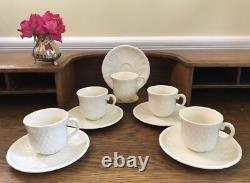
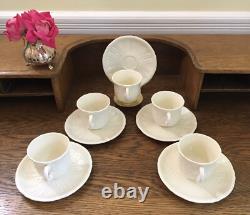
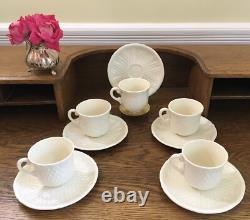
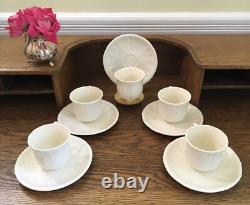
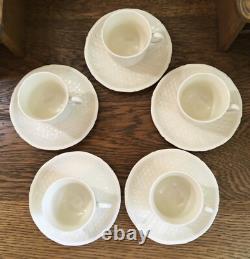
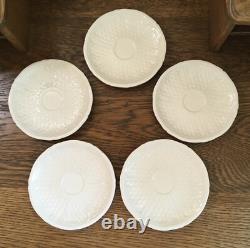
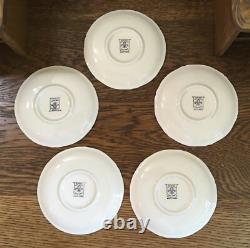

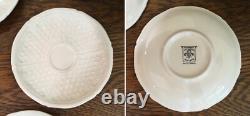
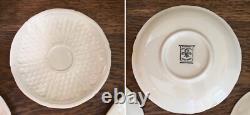
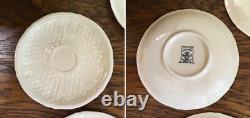
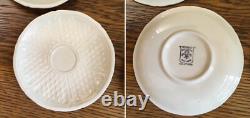
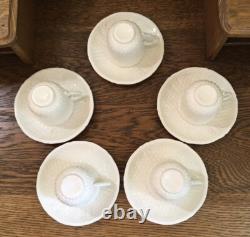
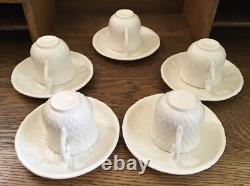
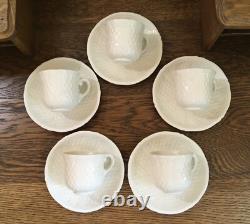
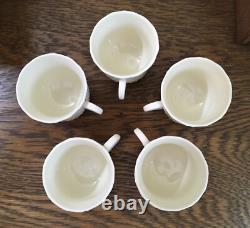
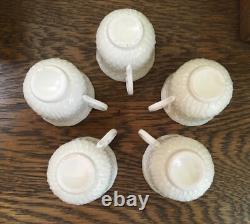
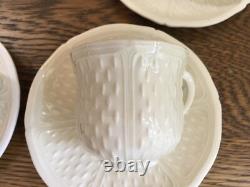
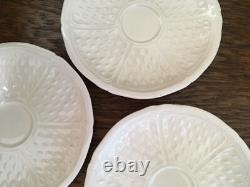
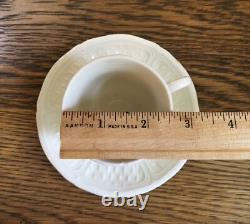
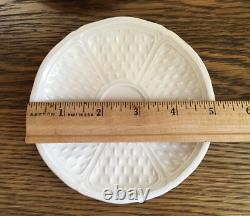
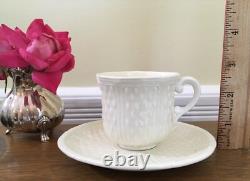

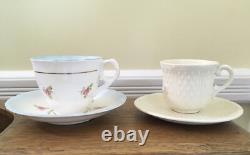


This is for 5 beautiful sets of demitasse cups and saucers made by Faiencier de Gien of Val de Loire France. The pottery was started by the Englishman Thomas Hall, who bought a convent there in the Loire Valley in the town of Gien in 1821. Back then, the city of Gien was an important commercial center, with the raw materials of clays, sands and siliceous pebbles from the Loire River, which was used to transport wood from the forests to the town for the kilns to bake the pottery.
Faience or faïence is the general English language term for fine tin-glazed pottery. The invention of a white pottery glaze suitable for painted decoration, by the addition of an oxide of tin to the glaze, was a major advance in the history of pottery which seems to have been made Middle East before the ninth century. The kiln had to reach a temperature of 1,000 °C (1,830 °F) to do this. The term faience is now used for a wide variety of pottery from several parts of the world. In English, faience is used to describe this type of pottery from France, Germany, Spain, and Portugal.
In Italy it is called Majolica/maiolica, in Holland it is called Delftware. The saucers have the Gien backstamp under the glaze. Du Barry is the pattern name, 18 éme SIÉCLE for 18th century, and Made in France under the shield. I could not find the date that the Du Barry pattern or this backstamp was made, but have some ideas. First, I did contact the Gien company which is still in business creating high end china, but have not gotten a response. I will update if/when I do. Because the backstamp says "Made in France" in English, that shows it was made after the McKinley Act of 1921, requiring the name of the country of origin to be in English to import to the US. So the Du Barry pattern was likely made after 1921, but before 1993. Also, this pattern, with the backstamp of Du Barry, is quite rare. These sets are so lovely, decorated with raised long dots, evenly spaced, inside panels. I see no chips, cracks, or stains, but there are some crazing lines, which is so common on older glazed earthenware.One cup and saucer in particular has more crazing than the rest. When washing the pieces, those lines darkened when they are wet, then disappear when dry. That cup and saucer in particular show those lines right after washing. Looking at an angle to the light, I see minimal wear on the glaze on both the cups and saucers and no marks, like utensil marks in the glaze looking at an angle to the light.
The entire saucer is glazed, including the rim it sits on when put down, so there are kiln support marks on the underside of the saucers, where the saucer rested while being fired in the kiln. There are a couple of those places on the underside of the saucers where there is no glaze or less glaze. One spot in particular looks like it is a kiln support mark, and another spot is sharper, where the glaze came off when removed from the kiln support. There are occasional marks, like a transfer mark on a saucers edges. The cups are 2 & 3/8 inches high, 2 & 5/8 inches in diameter and the saucers are 5 & 1/8 inches in diameter.
The cus hold 1/2 cup to the top, and 1/3 cup easily. The last picture shows a set next to a regular sized cup and saucer set so you can get a better idea of it's size. A regular teacup holds 2/3 to 3/4 cup. One of these sets weighs about 7 ounces. Please zoom in on the pictures and see the 360 degree video for a closer look. Any questions, please ask and thanks for looking!
